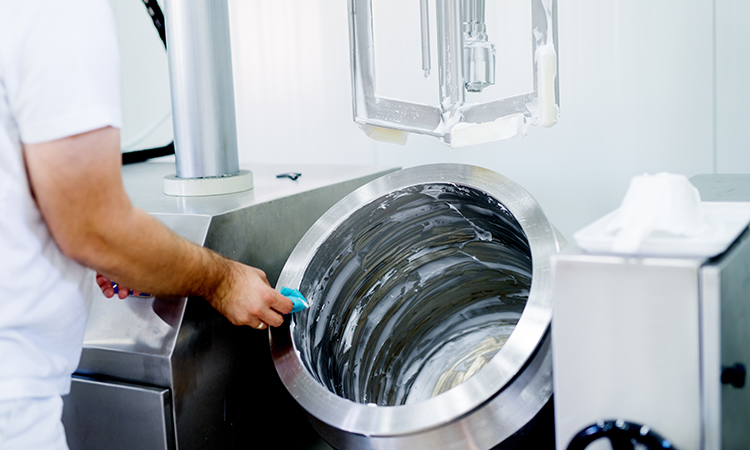Rapid test identifies dirty areas of food processing plants through light
- Like
- Digg
- Del
- Tumblr
- VKontakte
- Buffer
- Love This
- Odnoklassniki
- Meneame
- Blogger
- Amazon
- Yahoo Mail
- Gmail
- AOL
- Newsvine
- HackerNews
- Evernote
- MySpace
- Mail.ru
- Viadeo
- Line
- Comments
- Yummly
- SMS
- Viber
- Telegram
- Subscribe
- Skype
- Facebook Messenger
- Kakao
- LiveJournal
- Yammer
- Edgar
- Fintel
- Mix
- Instapaper
- Copy Link
Posted: 10 May 2021 | New Food Magazine | No comments yet
Researchers say the new instrument can take the subjectivity out of cleaning debates, by quickly identifying areas of food production plants that have not been cleaned properly.


By swiping surfaces in commercial food processing plants with specially designed rapid-testing adenosine triphospate (ATP) swabs – which produce a light similar to the glow of fireflies in the presence of microorganisms – spoilage and foodborne illness could diminish, according to a new study from Cornell University food scientists.
During food production, routine cleaning and surface sanitation are keys to help prevent microbial contamination in the end food products. Without such a sanitation regime, food from processing plants can become more vulnerable to spoilage, and people who eat that food may face greater risk with illness or death from foodborne pathogens.
“Food scientists know that for processing plants, visual inspection is not a reliable indicator of cleaning-protocol success,” said Randy Worobo, professor of food science in the College of Agriculture and Life Sciences (CALS) and faculty fellow at the Cornell Atkinson Center for Sustainability.
“All food factory ‘ecosystems’ are prone to niches where microorganisms can hang out or where food residues can persist. We need to find them.”
Worobo is senior author of the study ‘Implementation of ATP and Microbial Indicator Testing for Hygiene Monitoring in a Tofu Production Facility Improves Product Quality and Hygienic Conditions of Food Contact Surfaces: A Case Study,’ which has been published in Applied and Environmental Microbiology.
Each year, more than 48 million Americans get sick from foodborne pathogens; more than 120,000 are hospitalised and about 3,000 die, according to the US Centers for Disease Control and Prevention.
Worobo and lead author Jonathan H. Sogin, a doctoral student in food science, in partnership with 3M Food Safety microbiologists, spent nine months testing samples collected from the processing environment in a commercial tofu manufacturing facility.
Worobo, Sogin and the 3M Food Safety team assembled a custom-designed plan to use an ATP swab test to check dozens of critical points in the plant after it had been cleaned. Following use, the ATP swab is placed in a luminometer instrument, where the bioluminescence of contaminants is detected.
The amount of light is transformed in the luminometer to relative light units, where this value is displayed on the instrument. If it exceeds a defined threshold value, the surface would be considered dirty and may indicate that cleaning operations were not performed properly.
Results show that targeted cleaning – demonstrated by ATP monitoring, and verified by further microbiological tests – can improve the environmental hygiene of food-processing facilities.
“If a plant supervisor is responsible for the cleaning crew and the supervisor says, ‘That’s not clean enough,’ there might be an employee who thinks that the supervisor is picking on them,” Worobo said. “Instead, if you have luminometer, like the 3M Clean-Trace system, that device removes the bias so that the cleaning crew itself can see the numbers. These methods become a quantitative way to ensure that they’re doing a good job.”
ATP monitoring and microbiological enumeration can verify and improve the efficacy of cleaning and sanitation practices, which can have a positive impact not only for the facility, but for product quality, Sogin said.
“This test can not only verify that the plant’s equipment and food-contact surfaces are cleaned and sanitized before starting food preparations, but it can also identify problematic situations. It helps you become a sleuth,” Worobo said.
“But as a standard, the industry should be using this method to verify cleaning and sanitation programs. It’s key.”
Related topics
Contaminants, Equipment, Food Safety, Hygiene, Lab techniques, Mycotoxins, Outbreaks & product recalls, Processing, Research & development, Technology & Innovation
Related organisations
College of Agriculture and Life Sciences (CALS), Cornell University









